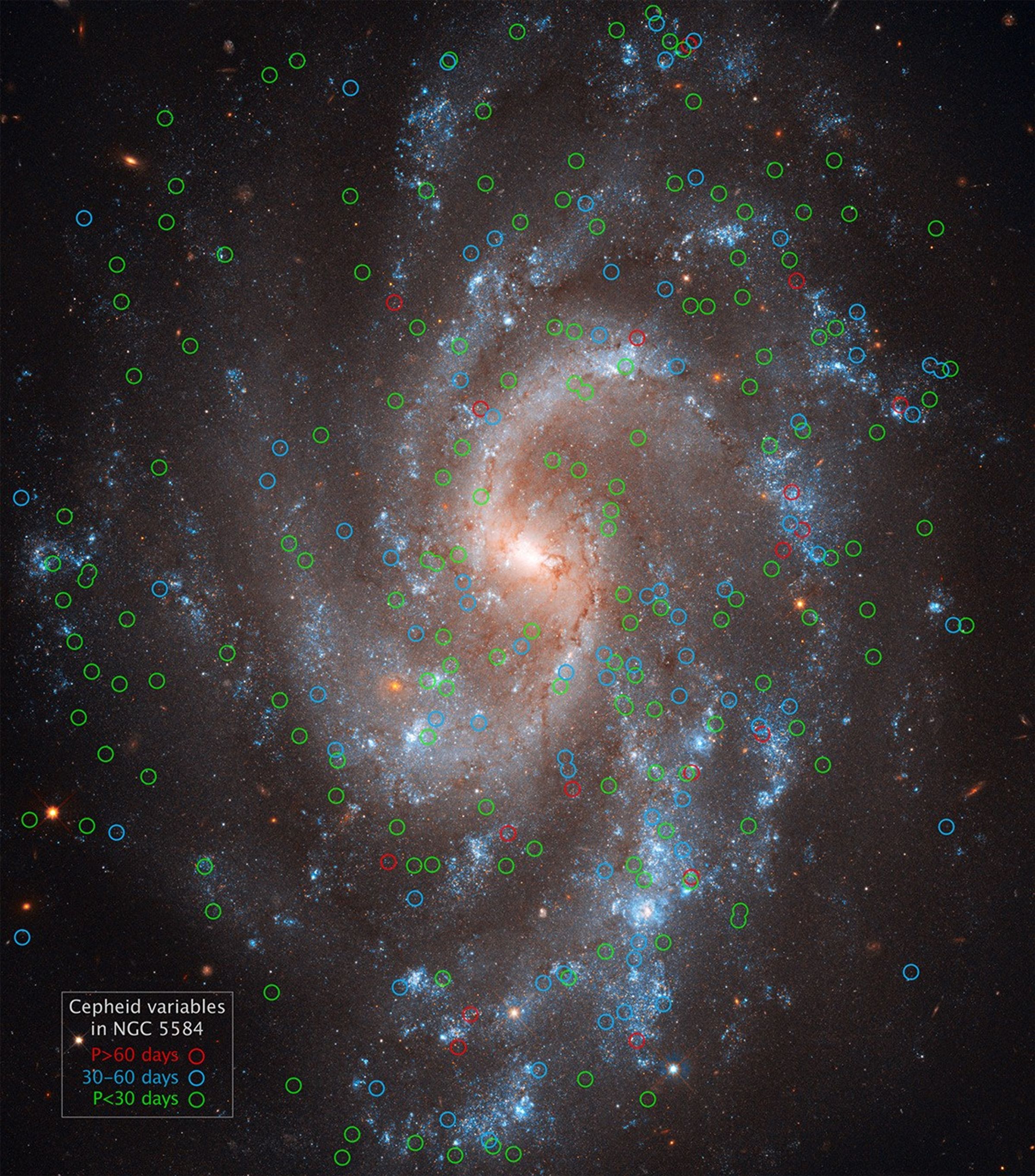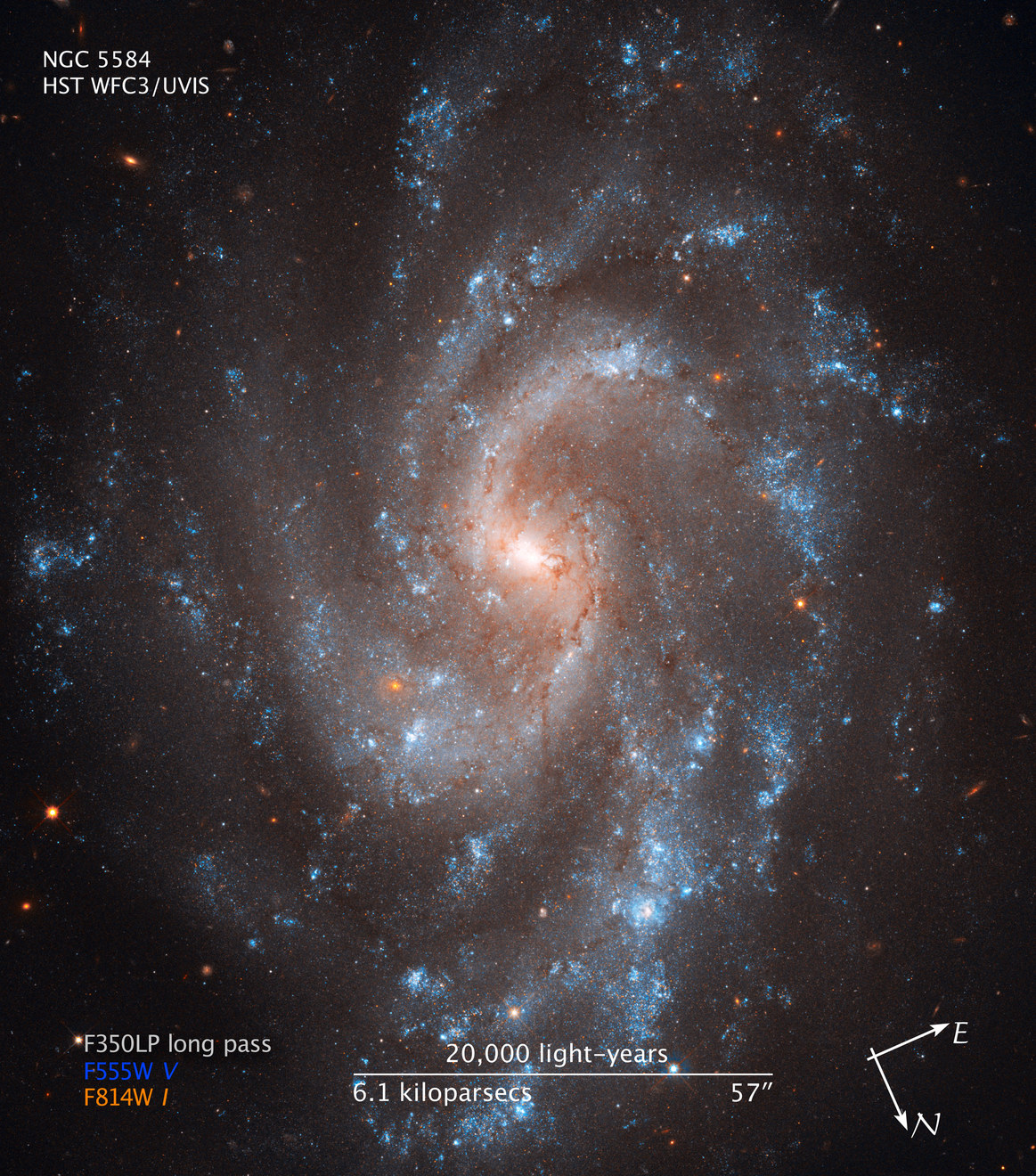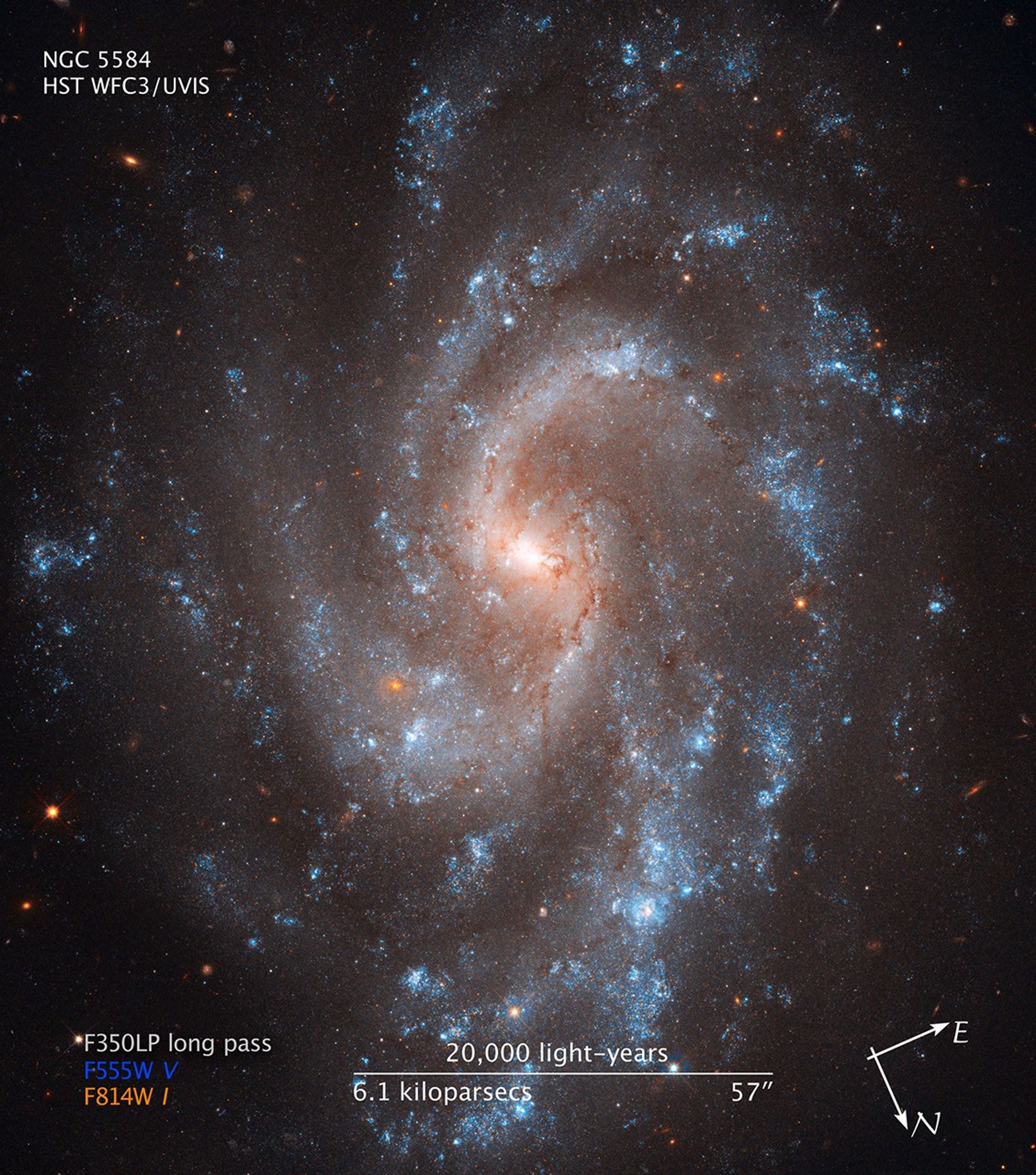1 min read
Cepheids in Spiral Galaxy NGC 5584

About the Object
- R.A. PositionR.A. PositionRight ascension – analogous to longitude – is one component of an object's position.14h 22m 23.76s
- Dec. PositionDec. PositionDeclination – analogous to latitude – is one component of an object's position.00° 23' 15.61"
- ConstellationConstellationOne of 88 recognized regions of the celestial sphere in which the object appears.Virgo
- DistanceDistanceThe physical distance from Earth to the astronomical object. Distances within our solar system are usually measured in Astronomical Units (AU). Distances between stars are usually measured in light-years. Interstellar distances can also be measured in parsecs.About 72 million light-years (22 million parsecs)
- DimensionsDimensionsThe physical size of the object or the apparent angle it subtends on the sky.The image is 2.4 arcminutes (50,000 light-years or 15,000 parsecs) wide.
About the Data
- Data DescriptionData DescriptionProposal: A description of the observations, their scientific justification, and the links to the data available in the science archive.
Science Team: The astronomers who planned the observations and analyzed the data. "PI" refers to the Principal Investigator.The image was created from Hubble data from proposal 11570: A. Riess (STScI/JHU), L. Macri (Texas A&M University), C. Kochanek and K. Stanek (Ohio State University), A. Filippenko and W. Li (University of California, Berkeley), S. Casertano and H. Ferguson (STScI), and L. Greenhill (Harvard-Smithsonian Center for Astrophysics). The science team comprises: A. Riess (STScI/JHU), L. Macri (Texas A&M University), S. Casertano (STScI), H. Lampeitl (University of Portsmouth, UK), H. Ferguson (STScI), A. Filippenko (University of California, Berkeley), S. Jha (Rutgers University), W. Li (University of California, Berkeley), and R. Chornock (Harvard-Smithsonian Center for Astrophysics). Note: Hubble data of NGC 5584 taken with WFC3/IR filters, along with numerous other galaxies, were used in these science results. - InstrumentInstrumentThe science instrument used to produce the data.HST>WFC3/UVIS
- Exposure DatesExposure DatesThe date(s) that the telescope made its observations and the total exposure time.January-April, 2010, Exposure Time: 20.8 hours
- FiltersFiltersThe camera filters that were used in the science observations.Blue:
- Object NameObject NameA name or catalog number that astronomers use to identify an astronomical object.NGC 5584
- Object DescriptionObject DescriptionThe type of astronomical object.Spiral Galaxy
- Release DateMarch 14, 2011
- Science ReleaseNASA’s Hubble Rules Out One Alternative to Dark Energy
- Credit

This image is a composite of separate exposures acquired by the WFC3 instrument on HST. Several filters were used to sample broad wavelength ranges. The color results from assigning different hues (colors) to each monochromatic (grayscale) image associated with an individual filter. In this case, the assigned colors are: White: F350LP (Long Pass) Blue: F555W (V) Orange: F814W (I)

Related Images & Videos

Hubble's View of NGC 5584
The brilliant, blue glow of young stars traces the graceful spiral arms of galaxy NGC 5584 in this Hubble Space Telescope image. Thin, dark dust lanes appear to be flowing from the yellowish core, where older stars reside. The reddish dots sprinkled throughout the image are...
Share
Details
Claire Andreoli
NASA’s Goddard Space Flight Center
Greenbelt, Maryland
claire.andreoli@nasa.gov





























